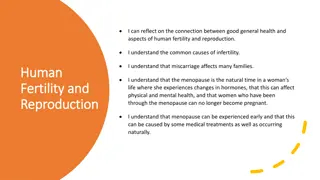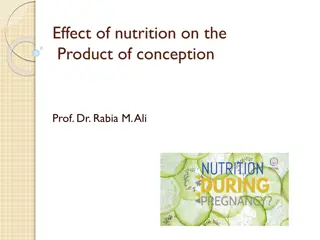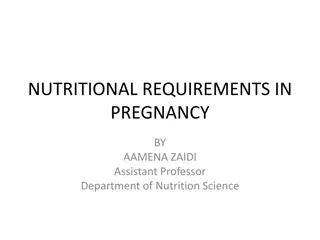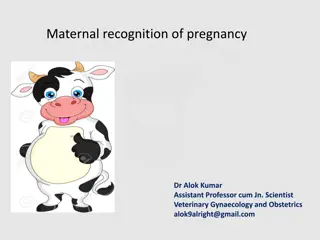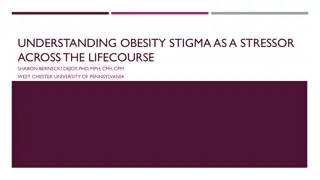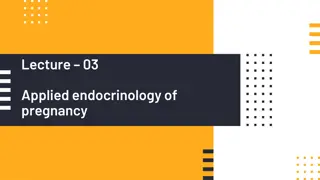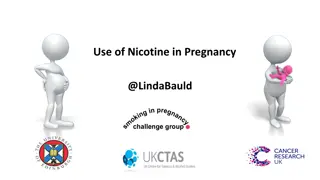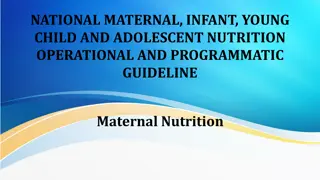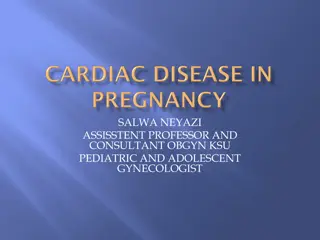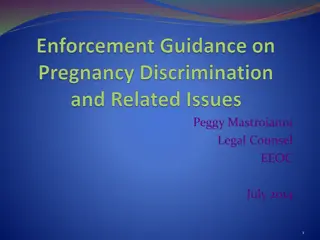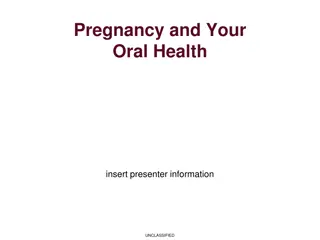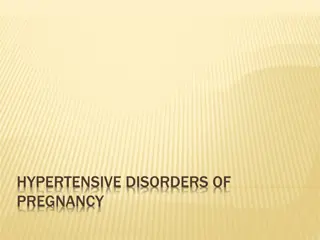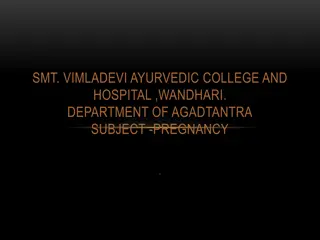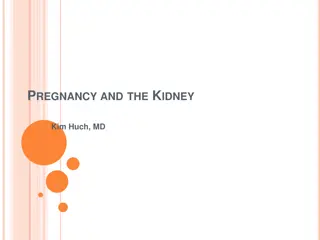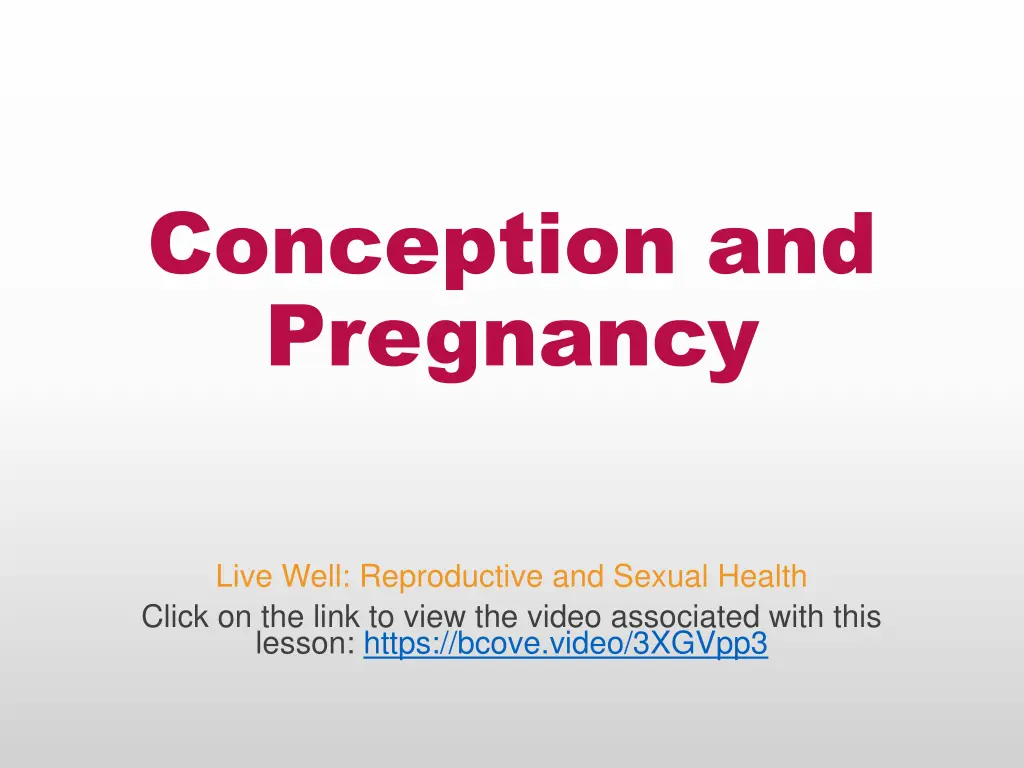
Understanding Conception, Pregnancy, and Prenatal Care
Explore the journey of conception, pregnancy stages, and the importance of prenatal care. Learn about the changes during the trimesters, options if pregnant, and the differences in parenthood scenarios. Discover the significance of healthy practices for a smooth pregnancy experience.
Download Presentation

Please find below an Image/Link to download the presentation.
The content on the website is provided AS IS for your information and personal use only. It may not be sold, licensed, or shared on other websites without obtaining consent from the author. If you encounter any issues during the download, it is possible that the publisher has removed the file from their server.
You are allowed to download the files provided on this website for personal or commercial use, subject to the condition that they are used lawfully. All files are the property of their respective owners.
The content on the website is provided AS IS for your information and personal use only. It may not be sold, licensed, or shared on other websites without obtaining consent from the author.
E N D
Presentation Transcript
Conception and Pregnancy Live Well: Reproductive and Sexual Health Click on the link to view the video associated with this lesson: https://bcove.video/3XGVpp3
Write About It If you were to become pregnant or get someone pregnant, list three ways you think your life may change in the next nine months and three ways your life may change over the next five years.
Can You . . . explain what happens during conception? identify what happens in each of the trimesters of pregnancy? analyze the options you have if you or your partner is pregnant? compare and contrast the differences between becoming a parent while in high school and becoming a parent after high school?
Conception Conception is the union of an ovum and a sperm primarily through sexual intercourse. When ovulation occurs, an ovum is released into a fallopian tube. If sperm are also present in the fallopian tube, the ovum may be fertilized.
Stages of Pregnancy (1 of 3) In the first trimester: The fertilized ovum becomes an embryo. The embryo begins to develop in the amniotic sac filled with fluid that surrounds and protects it. The embryo begins to develop arms, legs, and internal organs. The embryo receives oxygen and nutrients through the umbilical cord, which connects the embryo to the placenta. The placenta provides the oxygen and nutrients to the baby throughout the nine months. At the third month of the first trimester, the embryo is referred to as a fetus. (continued)
Stages of Pregnancy (2 of 3) In the second trimester: The fetus begins to breathe the amniotic fluid. Organs continue to develop, including the lungs and the ability to hear. Brain waves develop. The mother will begin to gain weight and feel the baby move.
Stages of Pregnancy (3 of 3) In the third trimester: The baby has a fully formed brain and nervous system. The baby begins to build up fat for energy and warmth.
Prenatal Care Prenatal care is health care for the pregnant person and the developing baby before birth takes place. People who are pregnant should Eat healthy meals, making sure to get the proper nutrients Exercise regularly Avoid alcohol, nicotine, and any drugs not approved by their OB/GYN
Childbirth Families have choices about the childbirth process: Could give birth at a hospital or birthing center. Midwives can deliver babies in hospitals or in the home. Cesarean sections (C-sections) may be required.
The Stages of Childbirth The first stage is the longest. Contractions get stronger and the cervix dilates. The baby moves from the uterus to the vagina. The second stage involves stronger contractions, and the baby moves completely through the vagina out of the body. The third stage is the delivery of the placenta.
Teen Pregnancy If you or your partner is pregnant, it is important to know the options: Keep the baby and become a teen parent Give the baby up for adoption
Teens as Parents (1 of 2) Challenges include the day-to-day care of your child, money issues, social relationships, and your own emotions. Rights and responsibilities to provide care for the child are determined by whether the teens are married or not. Teen parents who are married: Both parents have rights and responsibilities to provide care for the child. Unmarried teen parents: The parent who gave birth automatically has the rights and responsibilities to provide care for the child. For the father to have any rights and responsibilities to provide care, they must be named as the father on the birth certificate, or they must sign a declaration of paternity, which establishes them as the father. (continued)
Teens as Parents (2 of 2) Unmarried parents must also establish custody or the legal right to care for the child. Four primary types of custody: Legal custody parent s right to make any decision regarding the needs of the child including education, health care, and religion. Physical custody who the child will live with daily; is usually awarded as joint physical custody so the child has equal time with both parents. Sole custody one parent has legal and/or physical custody of the child. Joint custody both parents have legal and/or physical custody of the child. If one parent is not involved with the child, they are still responsible for child support, which is the financial support for the child.
Adoption Options Adoption is the legal process of parental rights being transferred from the birth parents to the adoptive parents. Adoption occurs for financial, emotional, and medical reasons, among many others. Two most common types of adoptions are open and closed adoptions. Open adoption identities of the birth parents and the adoptive parents are shared, and there is commonly some level of interaction between the two. Closed adoption birth parents and adoptive parents have little to no contact with each other and information is not shared.
Safe Haven Laws All 50 states have some form of safe haven law. A safe haven law allows a person to give up an infant anonymously without fear of arrest or prosecution, as long as the baby hasn t been abused. The purpose of the law is to protect babies from being hurt or killed because they were abandoned somewhere unsafe by a parent who had hidden the pregnancy, couldn t keep the baby, or didn t know what else to do.
Benefits of Finishing High School Before Becoming a Parent A person with ovaries who waits until adulthood to have a child can establish a career. Mothers and fathers may have less debt and be more financially able to afford a child. Adult parents tend to have more patience. Children of parents in their 30s and older were found to be better behaved, better educated, more socially adjusted, and physically and emotionally healthier overall than children who were born to teenage parents.
Skill-Building Challenge If you were to become a teen parent, you would be responsible for raising your child. Use the Internet and the Accessing Information Skill Cues to locate valid and reliable information for your state and the area you live in.


